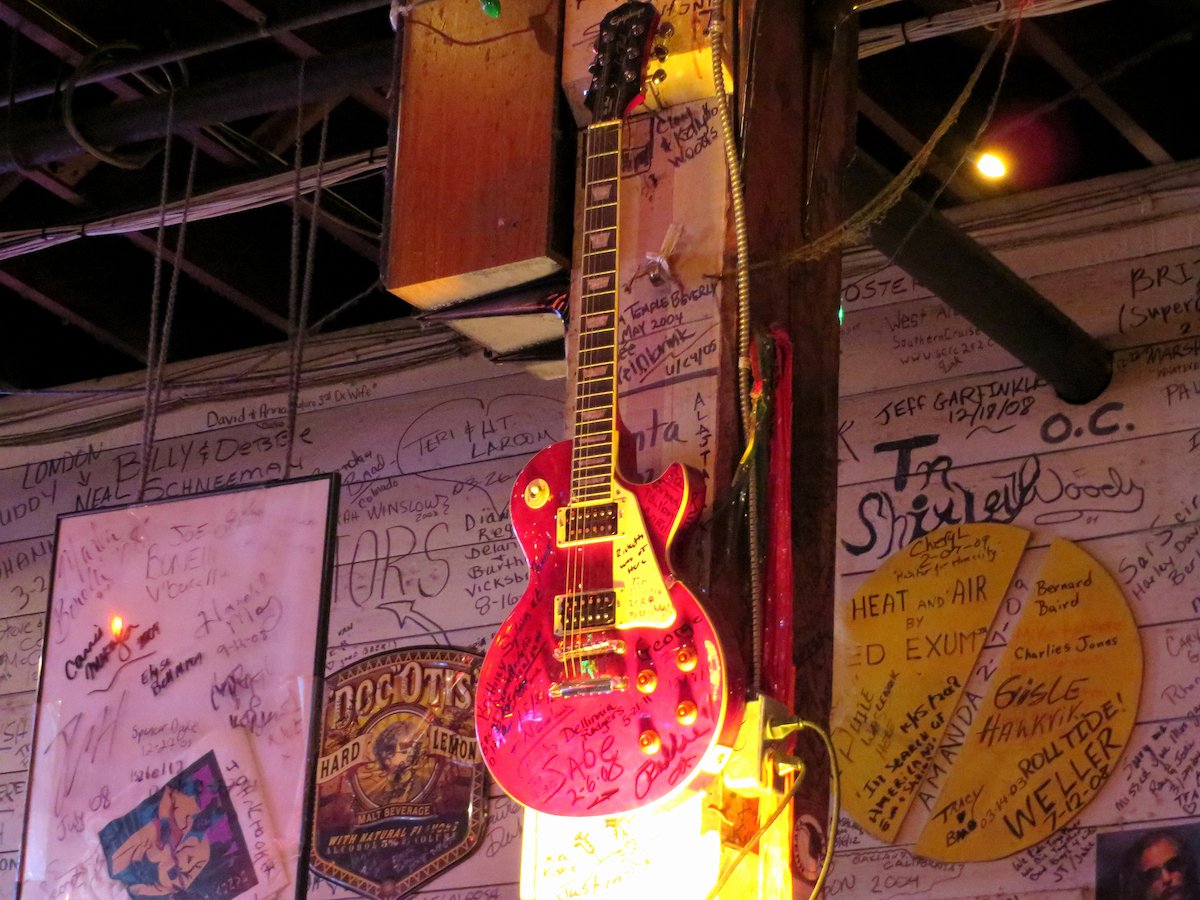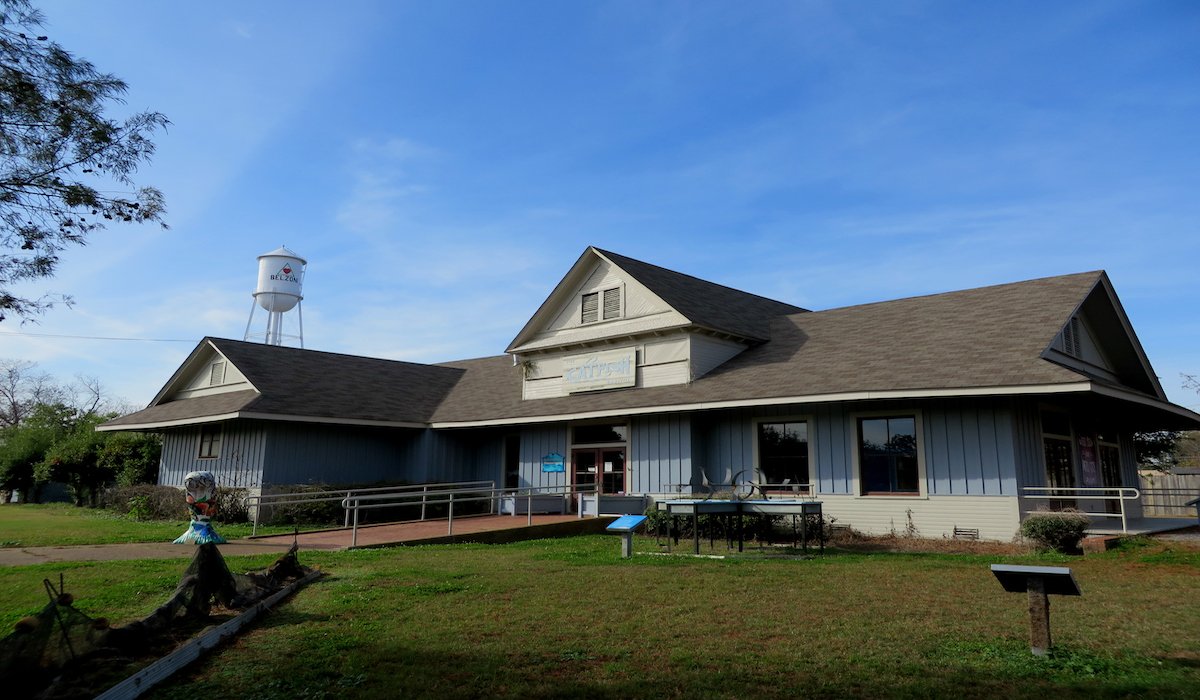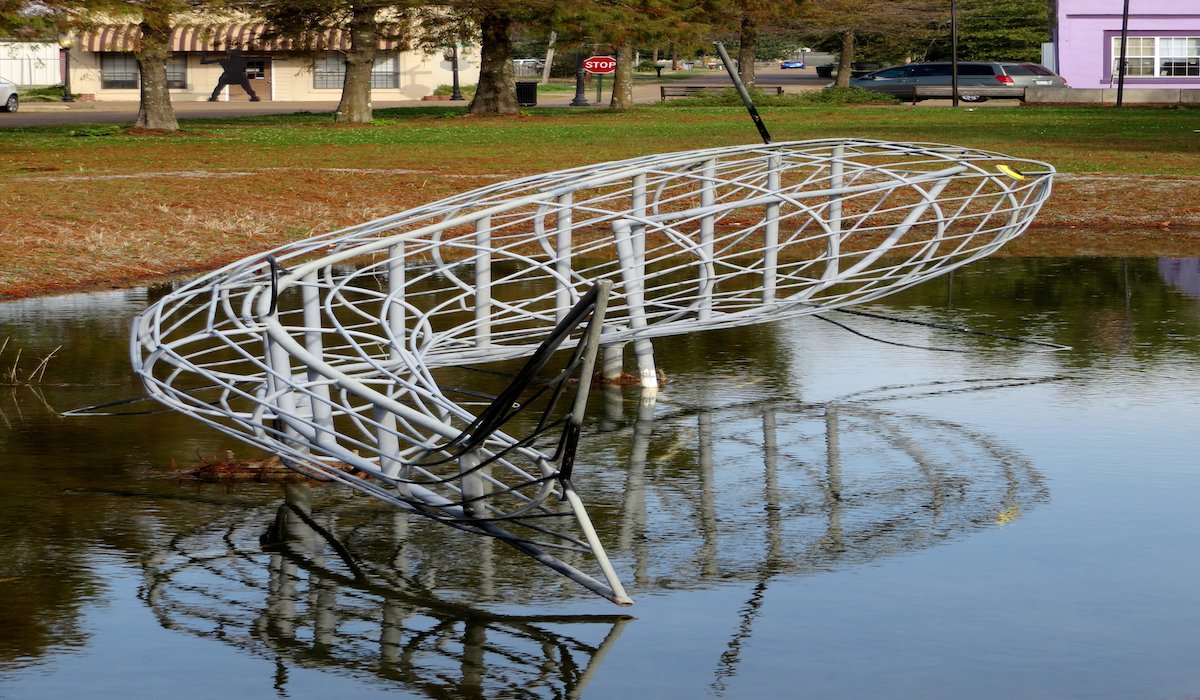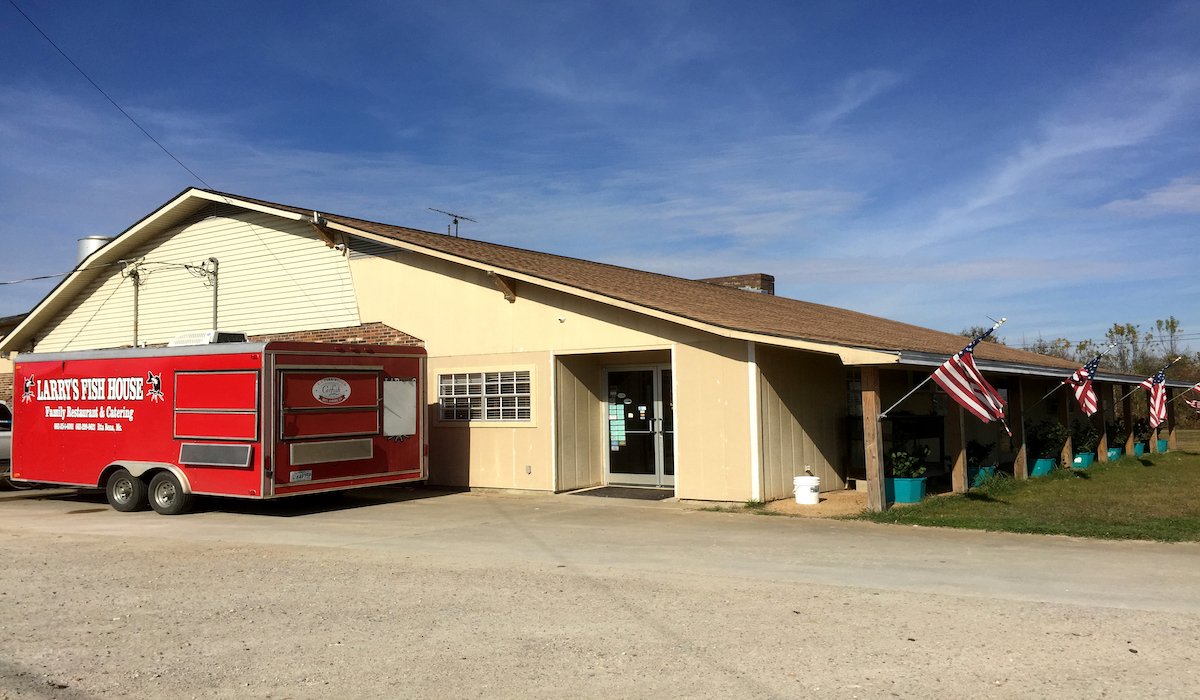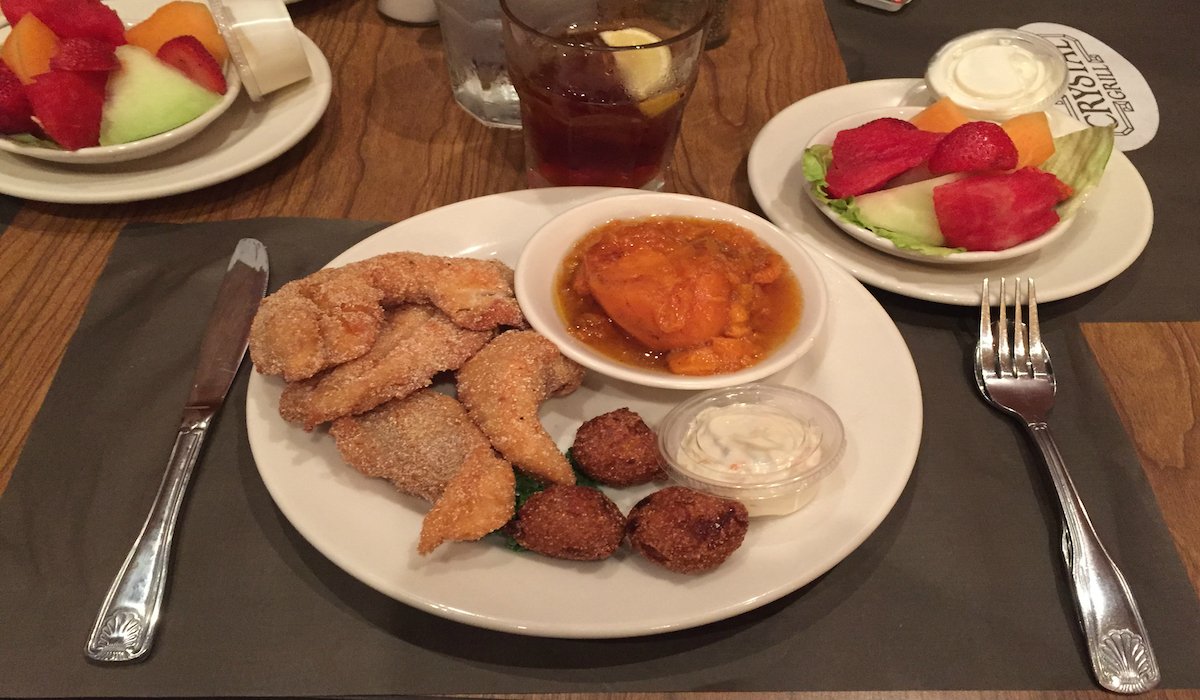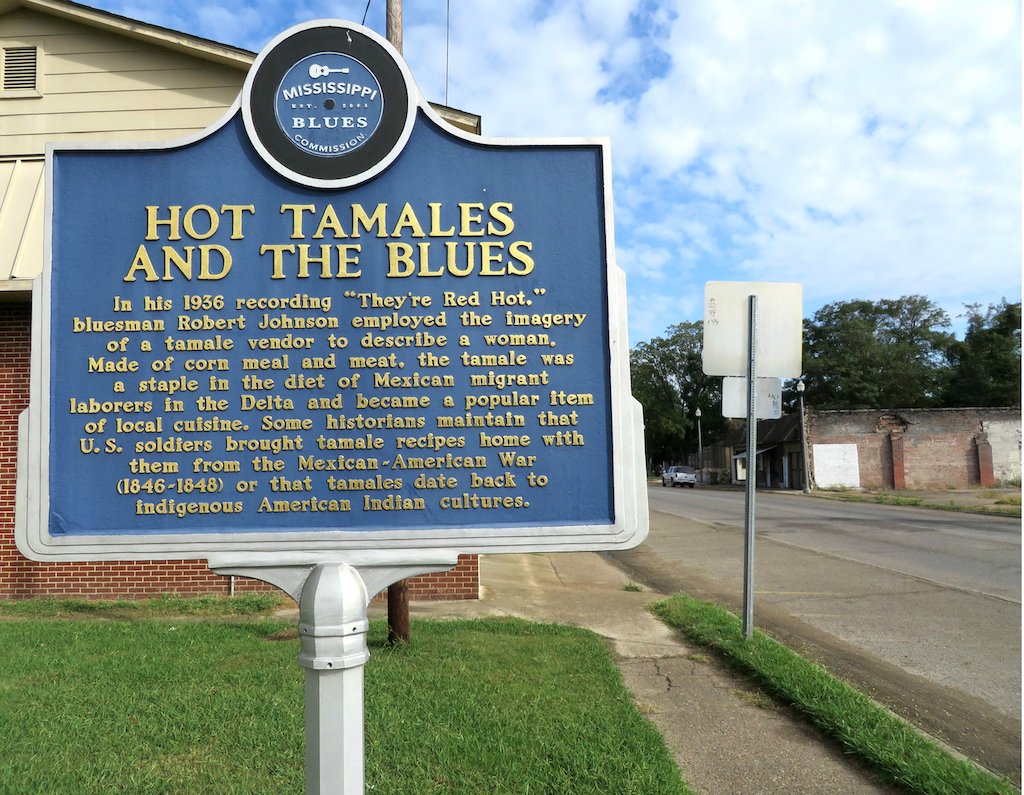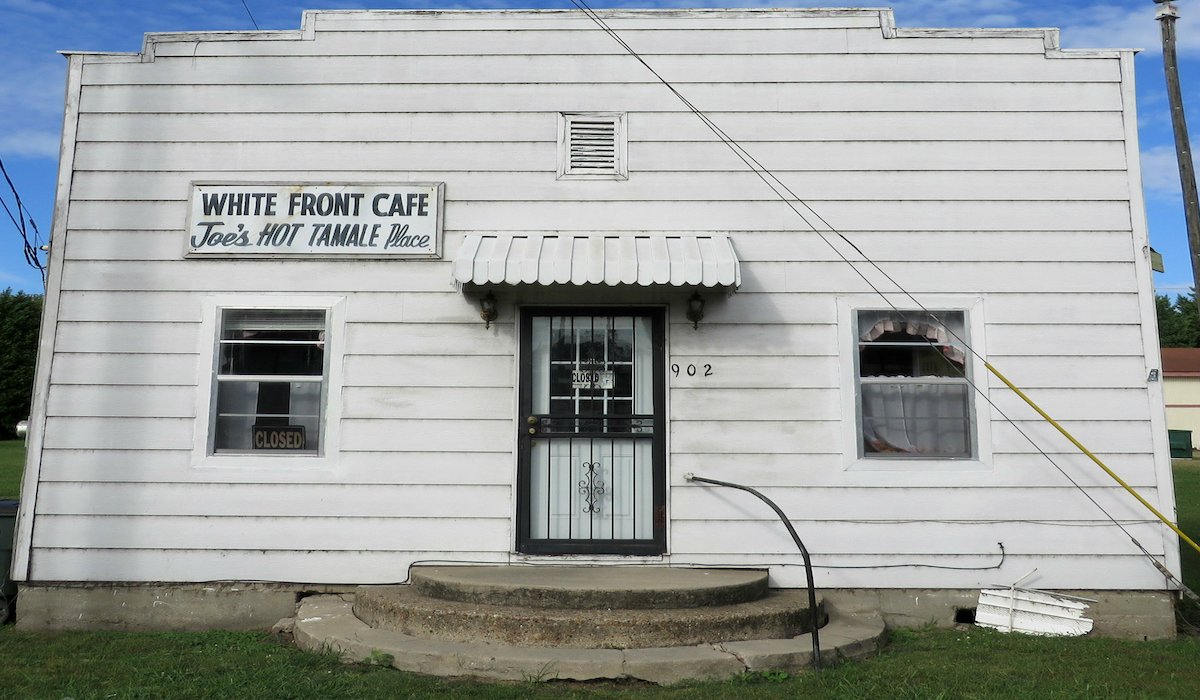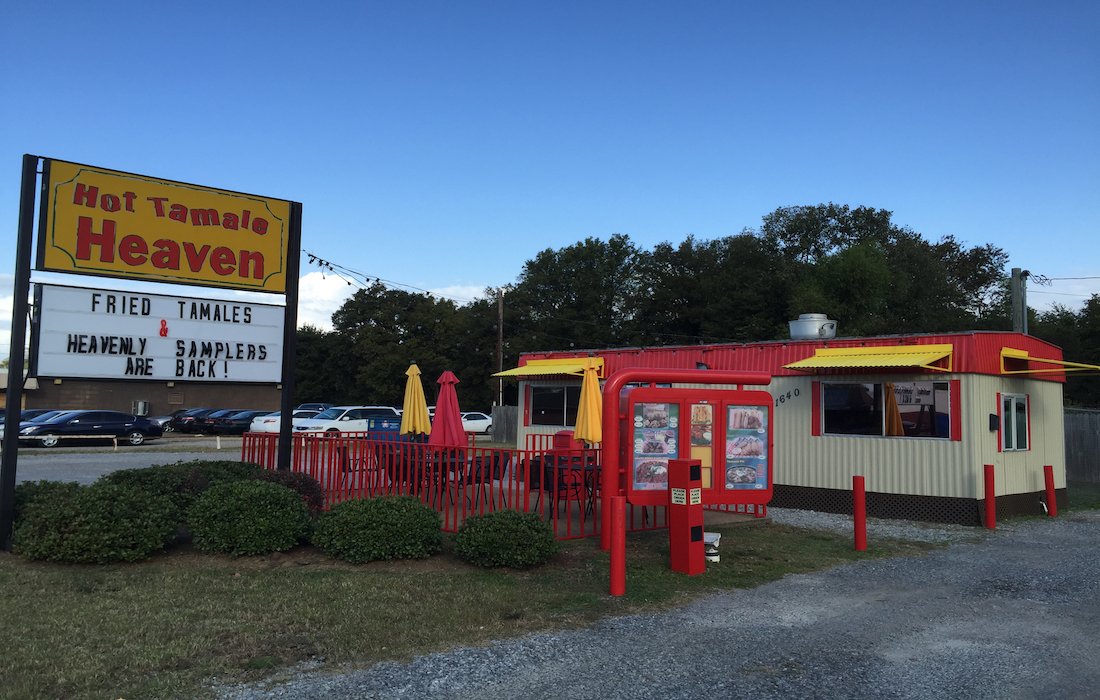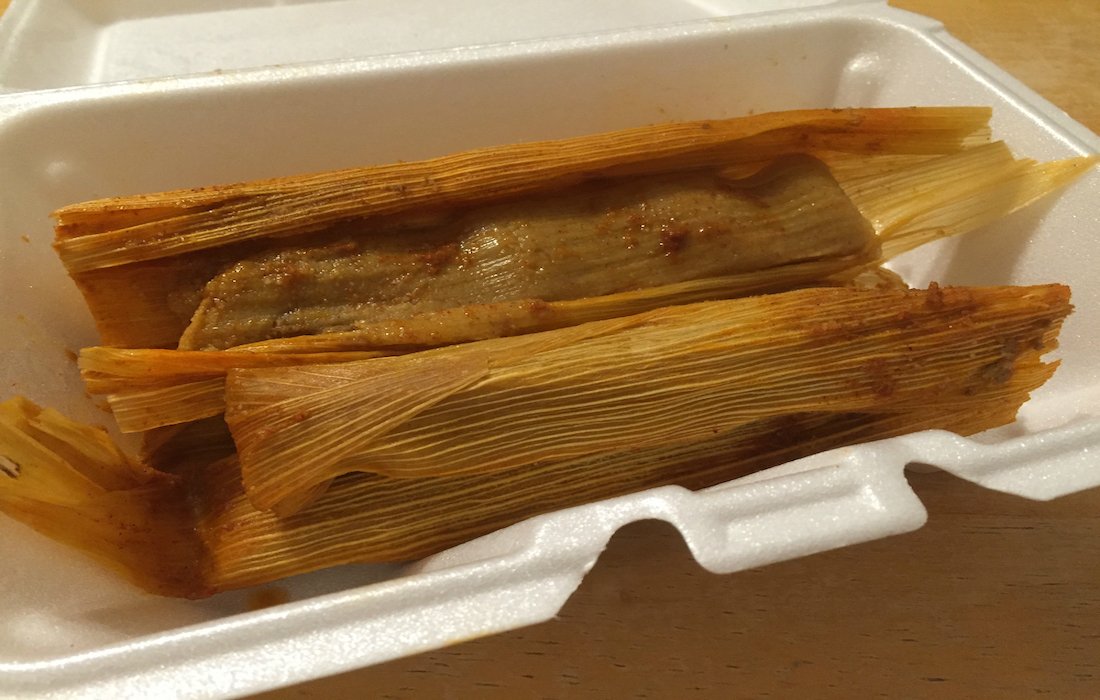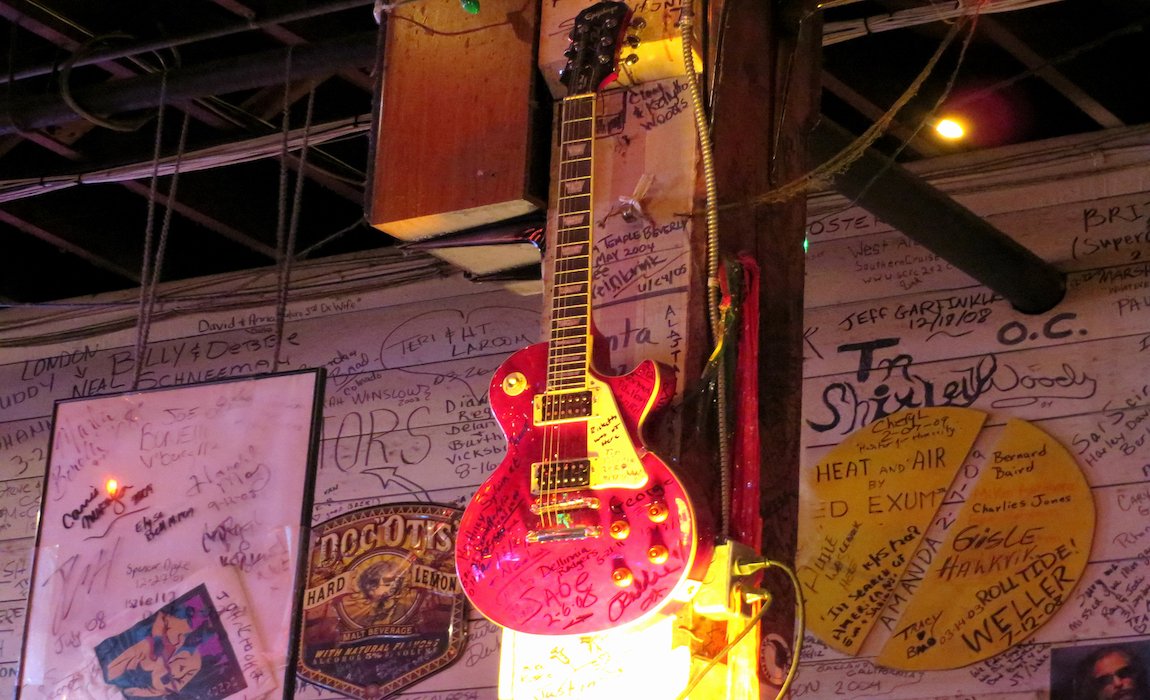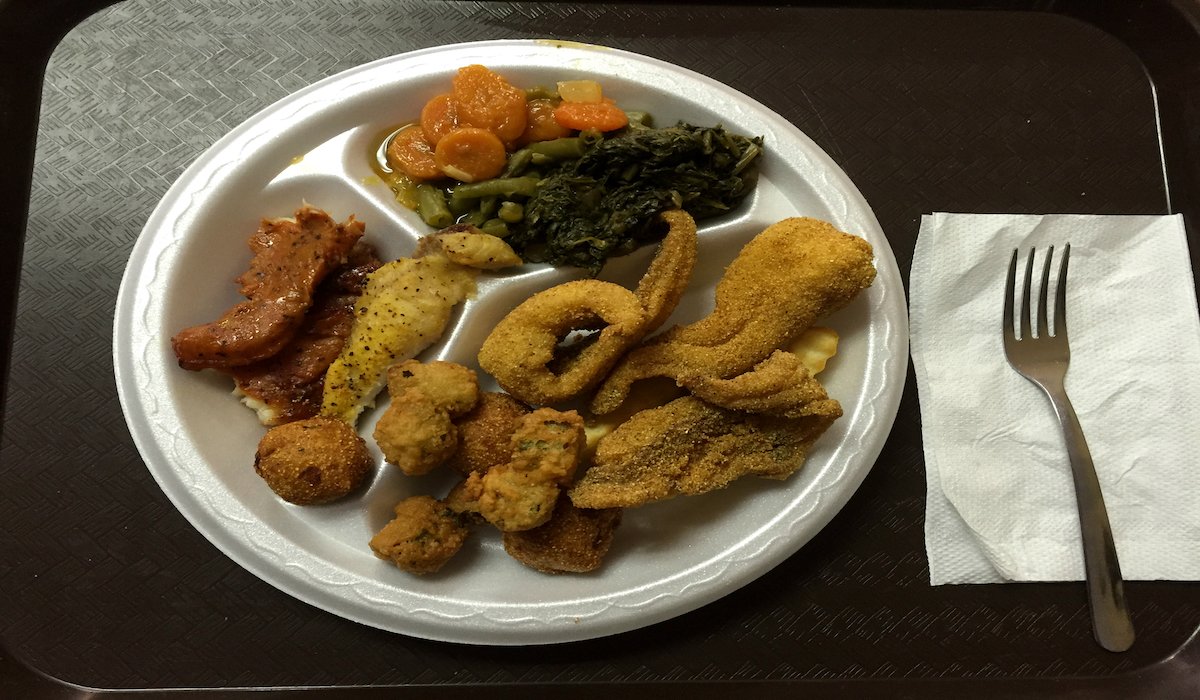Cultural Flavors of the Delta
Mississippi Delta field: banner image by James Golden, award-winning horticulture photographer. © James Golden. Image used by permission. All other images in the essay are by John Zheng. Creative Commons (CC). Attribution-NonCommercial-ShareAlike CC BY-NC-SA.
Cultural Flavors of the Delta: Hot Tamales, Blues Burger, and Fried Catfish
By John Zheng
Professor and Chair
English Department
Mississippi Valley State University
October 2022
George Bernard Shaw said, “There is no sincerer love than the love of food.”1 Good food is not just a nutritious substance that satiates hunger or sustains life; it is also a unique flavor that attracts visitors to hop into adventure, discover new tastes, and cultivate unforgettable memories.
The Mississippi Delta, also known as the Yazoo-Mississippi Delta, offers unforgettable memories of food and culture. The Delta is a flat alluvial plain between the two rivers in the northwestern region of the state of Mississippi. This leaf-shaped area, the most southern place of the nation, has a rich history in cotton and catfish farming, blues, Civil Rights movements, and diverse food cultures. A good way to experience the Delta is through food hunting. A culinary trip provides a chance to taste local-style food and learn about the food culture of the region.
A staple food with an enduring cultural presence in the Delta, hot tamale is made of cornmeal mixed with chili powder, meat, and seasonings. Each year the Hot Tamale Festival is held in Greenville, a river town that calls itself the Hot Tamale Capital and boasts more published writers per capita than any other town in the nation. The festival is a mashup event with the traditional tamale taste off, live music, and opportunities to meet with celebrity chefs, artists, musicians, and writers. The Southern Foodways Alliance provides detailed information about tamale history, tamale festival, tamale cooking, tamale trail, and interviews with tamale makers and vendors in the Delta.
The “Hot Tamales and the Blues” marker (Figure 1) is the first culinary marker erected in Mississippi. It stands beside Joe’s Hot Tamale Place, and the back of the marker tells about the progressive realization of the tamale culture: “Hot tamales may seem an odd food to encounter in the Mississippi Delta, but their presence reflects the region’s cultural diversity. Hundreds of years ago local Native Americans prepared a tamale-like dish of maize cooked in cornhusks, and in the late eighteenth and early nineteenth centuries, culinary traditions of Anglo- and African-Americans in the Delta were complemented by the foodways of new immigrants of Lebanese, Chinese and Italian origin.”2
Joe’s Hot Tamale Place, also known as the White Front Café (Figure 2), is one of the most famous tamale stops in the Delta. It is a clapboard building with a white front located on Main Street in Rosedale, a tiny river town that seems to have been passing into quiet dilapidation. This restaurant sustains an important piece of the Delta culture with its home-made tamales. The Southern Foodways Alliance narrates the story about Joe’s tamale business: “Born in 1924, Joe Pope was the oldest of ten children. His family moved from Alabama to the Rosedale area in the 1930s. Joe held different jobs over the years, but in the 1970s, after a friend shared a recipe with him, he began selling hot tamales. It is said that the friend, John Hooks, got the recipe from a Mexican migrant sometime in the 1930s…. Joe’s Hot Tamale Place…became so popular that Joe made it a full-time business when he retired from his day job. Joe passed away in December of 2004, but his youngest sister, Barbara Pope, is still making his famous tamales. Barbara worked by her brother’s side for seven years, helping to fill and roll the tamales by hand. Today, Barbara, her sisters, and their ninety-seven year-old mother, Emma, can be found at the White Front, cooking and selling the same hot tamales that Joe made famous.”3
Hot tamales have grown a deep root in the Delta. Many restaurants and eateries sell tamales. One early eatery was remembered by Kathy Starr in her book, The Soul of Southern Cooking: “My grandmama’s sister Minnie had a café back in 1927, and hot tamales and barbeque were the main dishes she served. Minnie taught Grandma how to make hot tamales."4 Today, Hot Tamale Heaven, a drive through on Highway 82 in Greenville, has continued its business for more than three decades. In 2016 it opened a dine-in tamale restaurant on Mississippi aHighway 1.
Although there are variations of tamales, my personal liking is the plain one made by spreading cornmeal batter on the shucks, folding the shucks, tying the tamale with a string, and steaming it (Figure 4). Eating it warm with a glass of iced tea or water is the best way to taste the plainness of the flatland food and of the flatland. There are also blues songs about hot tamales. One of them is “They’re Red Hot” (1936) by the blues legend Robert Johnson. Here are a few lines from the song: “Hot tamales and they’re red hot, yes she got ’em for sale, I mean / Yes she got ’em for sale, yeah Hot tamales and they’re red hot, yes she got ’em for sale / They’re too hot boy!”5
Whereas Johnson sang about hot tamales, there is another culinary item that is part of the Delta blues, and that is the blues burger cooked in Ground Zero Blues Club in Clarksdale, one of the “Top Ten Bars and Nightclubs in America” and the top one blues club in the nation.6 This world-famous restaurant was opened in 2001 by Morgan Freeman, a native Mississippi Deltan and an Oscar Award winner, and his business partner, Bill Luckett, who was mayor of Clarksdale. Mr. Freeman once said about his return to the Delta, “Home is a place that you long to go to and dread to leave.”7
It is doubtless that Ground Zero is a place with food and music that people long to go to and dread to leave. The paint-peeling building wears an old timey look, but as you walk inside, you are delighted at once by its colorful rustic décor, exhibition of guitars, national flags, blues posters, and numerous names signed or scribbled by musicians and customers on walls and tablecloths and even in the restrooms. While waiting for your order, you can ask a waitress for a marker pen to write your name on the floral vinyl tablecloth.
There seems to be no better place than Ground Zero to get a good taste of a burger. Eating a burger in this juke joint-style club is completely a different experience from eating in Burger King where you grab a bite and go. In Ground Zero, you order a blues burger not just for your stomach. You take time to engage your senses. You look around curiously and smell the flavor attentively, chewing the burger gluttonously, and listening to the blues wholeheartedly. In a way, you are experiencing the spirit of the Delta food and blues simultaneously, and your body and soul become cheerfully relaxed.
I have taken visitors from other states or from China, Japan, and Russia on Delta tours. Each time I say to them that their tour in the Delta won’t be complete without a must-stop at Ground Zero to savor a burger. The menu lists different kinds of burgers, but the quintessential one I crave is the Jukin’ Blues Burger topped with hand battered fried onions and jalapenos, melted mozzarella and American cheese, and homemade “get back” sauce. When you take a hearty bite of it for the crispy sound and piquant taste while watching a bluesman strumming a guitar or blowing a sax on the stage, you will also feel your chewing swing into the funky beats of the blues. Jukin’ Blues Burger! What a fitting name!
Jukin’ Blues Burger, Ground Zero Blues Club. Photography by John Zheng (2014)
Just as the tamale and burger are part of Delta music and foodways, catfish is integral to the region’s economy and culture. It is not surprising that catfish as a popular Delta food emerges as a theme in blues songs as early as in the 1920s. A metaphorical use of the catfish usually suggests the quest for love. The first song, titled “Catfish Blues,” was recorded in 1941 by Robert Petway, a little known bluesman from the Mississippi Delta:
Well if I were a catfish, mama,
I said swimming deep down in the big blue sea,
All these gals now, sweet mama,
Setting out, setting out hooks for me.8
According to the blues scholar Ted Gioia, this catfish song “ranks as one of the greatest performances of Delta blues, often emulated by other musicians.”9 For example, in 1950, Muddy Waters, one of the most influential blues musicians from the Delta, adapted Petway’s catfish song and gave it a new name “Rollin’ Stone” which was later adopted by the Rolling Stones rock band as its name. The catfish in Waters’ song, like Petway’s, is also a personified first-person fish:
Well, I wish I was a catfish,
swimmin’ in a oh, deep, blue sea.
I would have all you good lookin’ women
fishin’, fishin’ after me.10
This figurative longing to be a catfish is but a cultural manifestation of a Mississippi economy of farm-raised catfish production that has ranked first in the United States. According to John Egerton, “Mississippi farmers facing the worst depression since the 1930s began to turn their fortunes around by plowing up their cotton and soybean fields and digging catfish ponds,” which were “three fourths of the total acreage nationwide.”11 This industry started first in Humphreys County in the mid-1960s. “When J. B. Williamson dug his first catfish pond in 1965, Humphreys County was part of an economically blighted area in the heart of the Mississippi Delta. Standing waist-deep in their rubber waders, he and those who followed his example could only hope that their ponds might yield enough to turn a modest profit.
These first catfish farmers, as foresighted as they were, could never have imagined the future economic impact of those first few ponds in Humphreys County.”12 Its county seat, Belzoni, a small town with a remarkable cultural heritage, has gained fame as a Catfish Capital. It holds the catfish festival each year. Located in its downtown is the Catfish Museum and Welcome Center (Figure 8), where you will find “the complete story of the catfish from fingerling to frying pan.”13 Outside the museum is King Cat in the pond, an image that matches the name of the catfish capital. It is a forty-foot long catfish sculpture by Wes Bobo of Rolling Fork, Mississippi, an artist “who turns collected junk and found objects into art and mechanical inventions."14
Just as the tamale and burger are part of
Delta music and foodways,
catfish is integral to the region’s economy and culture.
Farm-raised in numerous ponds in the Delta, catfish has been a favorite food on the tables of the Delta people. Eating a fried catfish in a restaurant by the cotton fields seems to capture a sense or character of the Delta. Larry’s Fish House is a family-type restaurant outside a rural tiny town called Itta Bena, which means “Home in the Woods” in Choctaw. It opens Friday at lunch and Thursday, Friday and Saturday at dinner, and one can savor a serve-yourself buffet of baked, grilled, and fried catfish as well as fried whole catfish.
Another local restaurant serving tasty catfish is Crystal Grill in Greenwood. You order a platter of fried catfish with hushpuppies, candied yams, tartar sauce, sweet rolls, cornbread muffins, fruit salad, and ice-cold tea, and start your feast by squeezing lemon juice and Tabasco red sauce on the fish to enliven the flavor. What a yummy gourmet meal it is!
Whether fried or baked, the catfish offers not just a taste on the tongue but a taste of the Delta and its history as well. One special way to savor catfish is cooking it at home because home cooking carries an individual style enjoyed by the family. The flavor of the catfish can be complimented by a private atmosphere and a happy time together.
Wanda Hill, a retired catfish farmer in Humphreys County, offers her recipe of the country-fried catfish: 2 eggs, dash Worcestershire sauce, dash hot sauce, 2 ½ c. milk, 1 c. yellow cornmeal, ⅓ c. all-purpose flour, 4 catfish fillets, and vegetable oil for frying. And her cooking method is: “Beat eggs, Worcestershire sauce, hot sauce and milk in a shallow dish. Mix cornmeal and flour in another shallow dish. Dip fillets in mild mixture; dredge in cornmeal mixture. Set aside on wax paper lined baking fish. Fill a large, deep skillet half full with oil and heat to 350 degrees on a deep-fry thermometer. Add fillets, two at a time, to hot oil and fry 2 to 3 minutes on each side or until golden brown. Drain on paper towels and serve.”15
The food trails in the Mississippi Delta are always worth a drive, no matter whether they are bumpy, potholed, or boringly flat. They take across the flatland to the places where you can gain a delicious understanding of diverse food cultures, get the flavor out of the ordinary, and savor a moment among locals because “food,” as John Egerton says in Southern Food, “has been central to the region’s image, its personality, and its character.”16 Continuing a tradition of the region and its people, hot tamales, blues burger, and catfish provide sources for artistic expression and foreground the intertwined histories of the Delta foodways.
Whether fried or baked, the catfish offers not just a taste on the tongue but a taste of the Delta and its history as well
-
[1] Nicole M. Avena, Hedonic Eating: How the Pleasure of Food Affects Our Brains and Behavior (Oxford UP, 2015), 39.
[2]Mississippi Blues Trail. <http://msbluestrail.org/blues-trail-markers/hot-tamales>
[3] <http://www.southernfoodways.org/interview/joes-hot-tamale-place-a-k-a-the-white-front-cafe/>
[4] Kathy Starr, The Soul of Southern Cooking (UP of Mississippi, 1989), 30.
[5] Robert Johnson Blues Foundation. <ttp://www.robertjohnsonbluesfoundation.org/track/hot-tamales-theyre-red-hot/>
[6] “9 Incredible Blues Clubs Guaranteed to Make You Feel ‘So Bad!’” <https://bestbluesclubs.org/>
[7] “Life Unscripted with Morgan Freeman.” Mississippi: Official Tour Guide 2014. 11.
[8] Ted Gioia, Delta Blues: The Life and Times of the Mississippi Masters Who Revolutionized American Music (Norton, 2009), 212.
[9] Ibid., 211.
[10] Paul and Angela Knipple, Catfish: A Savor the South Cookbook (U of North Carolina P, 2015), 7.
[11) John Egerton, Southern Food: At Home, on the Road, in History (U of North Carolina P, 1993), 134.
[12] “The Catfish Capital of the World.” <http://www.belzonims.com/cfcapital.htm>
[13] “Catfish Museum and Welcome Center.” <http://www.belzonims.com/thecatfishcapitol.htm>
[14] Cited from <http://longhaulpro.org/junk-artist/>
[15] “Recipes.” Mississippi Farm Country, vol. 93, no. 5 (September/October 2017): 16.
[16] Egerton, 2.







